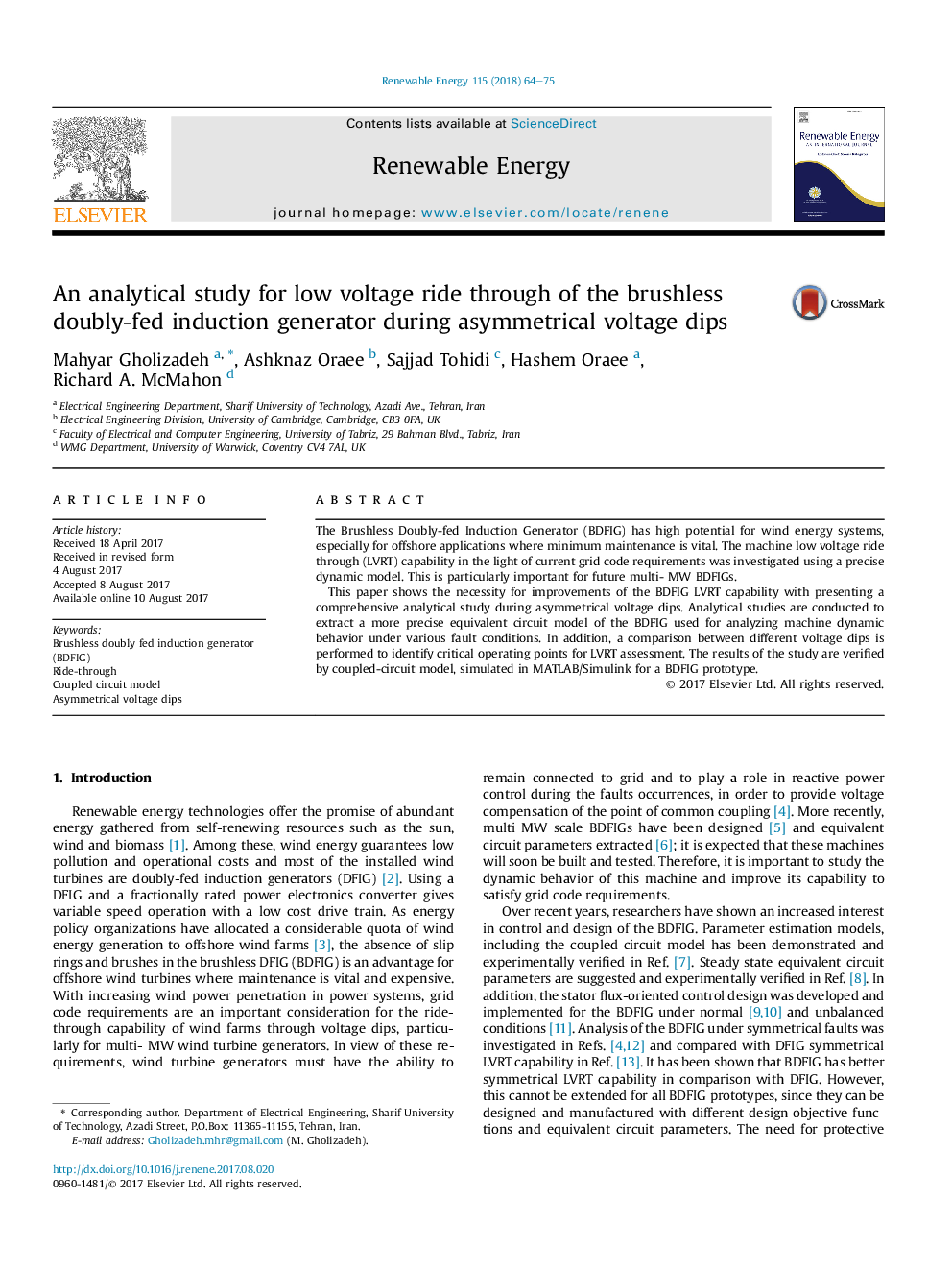| Article ID | Journal | Published Year | Pages | File Type |
|---|---|---|---|---|
| 4925988 | Renewable Energy | 2018 | 12 Pages |
â¢The necessity for further improvements of the BDFIG LVRT capability during asymmetrical voltage dips is shown.â¢A comparison between different voltage dips is performed to identify critical operating points for LVRT assessment.â¢The conditions under which neglecting the negative sequence of the CW currents may lead to unacceptable BDFIG LVRT behavior.â¢Whilst crowbarless LVRT is a big plus of the D-400 prototype, it is not necessarily achievable for any BDFIG prototype.â¢The effects of different levels of voltage dip, pre-fault shaft speed and times of occurrence are examined analytically.
The Brushless Doubly-fed Induction Generator (BDFIG) has high potential for wind energy systems, especially for offshore applications where minimum maintenance is vital. The machine low voltage ride through (LVRT) capability in the light of current grid code requirements was investigated using a precise dynamic model. This is particularly important for future multi- MW BDFIGs.This paper shows the necessity for improvements of the BDFIG LVRT capability with presenting a comprehensive analytical study during asymmetrical voltage dips. Analytical studies are conducted to extract a more precise equivalent circuit model of the BDFIG used for analyzing machine dynamic behavior under various fault conditions. In addition, a comparison between different voltage dips is performed to identify critical operating points for LVRT assessment. The results of the study are verified by coupled-circuit model, simulated in MATLAB/Simulink for a BDFIG prototype.
